HP Stream 7 Review: A $119 Windows Tablet
by Brandon Chester on December 19, 2014 8:00 AM ESTDisplay
The display is one of the most important aspects of a device, as it's the portal for interaction between the user and the software. Unfortunately, with inexpensive devices like the Stream 7, the display is often the first thing to be put on the chopping block. It's simply very difficult to put a high quality panel in a low cost device and make money selling it. That being said, HP has actually attempted to put a decent panel in the Stream 7 considering its price target.
Like I stated before, many other tablets at this size and price point either opt for a TN panel, or they reduce the resolution to 1024x600 or even go lower to 800x480, which is borderline unusable. HP has put a 1280x800 IPS panel in the Stream 7, which is fairly good considering that two years ago most Android tablets of any size shipped with that same resolution. The glass is highly reflective, and this is coupled with the fact that the display isn't laminated. There's also some light bleed at the bottom, but at $119 I can excuse this.
Of course, specs that you read on paper like size and resolution only tell part of the story. Color accuracy, brightness, and contrast all have an impact on overall display quality, and to measure these we use SpectraCal's CalMAN 5 software along with X-Rite's i1Pro 2 spectrophotometer and i1Display Pro colorimeter.
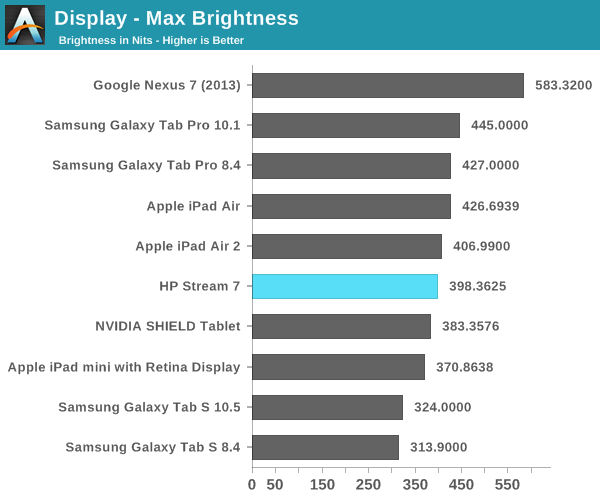
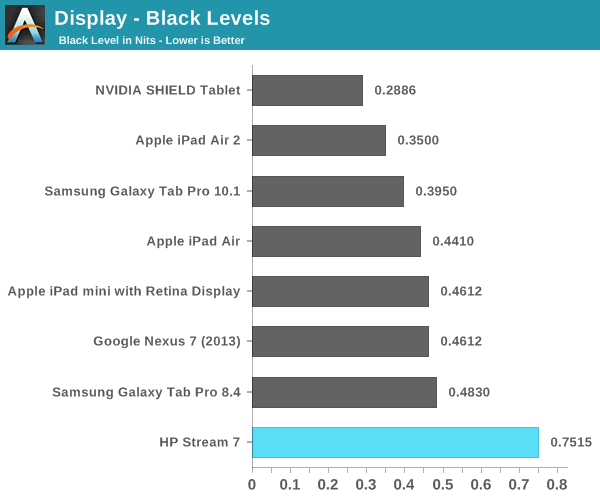
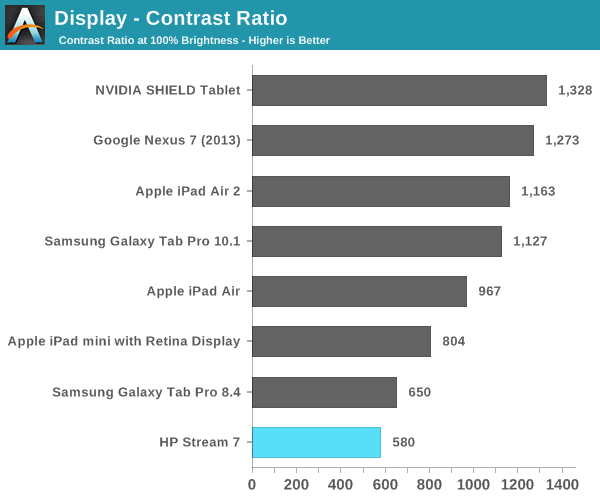
As you can see, the brightness of the Stream 7 is competitive with other tablets. Unfortunately, the black levels are just too high, which in turn leads to a very low contrast ratio. It should be noted that these measurements were achieved by disabling Intel's Display Power Saving Technology (DPST) feature, which causes dynamic brightness and contrast depending on the image displayed on the screen. While some other devices do this to some degree, DPST ended up reducing max brightness measurements by nearly 100nits, and the constantly changing brightness played havoc with measurements during analysis and calibration.


In the grayscale we see a shift toward blue, with the red steadily dropping off as brightness increases. This leads to the grayscale performance being some of the worst we have tested, but at $119 there's really no room for HP to do any calibration to the display panels at the factory.
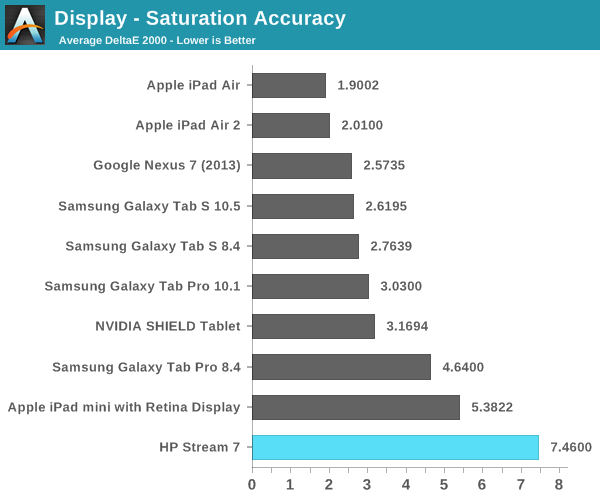
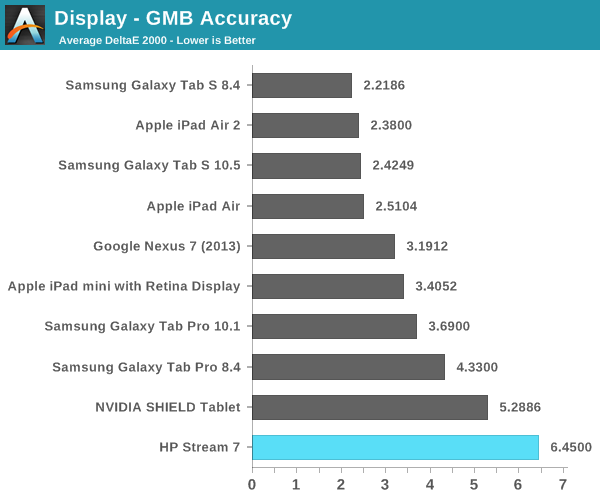
As with the grayscale test, we see poor performance in the saturation sweep. The display does not cover all of sRGB, and we see that for each 20% increment in the saturation sweep, the red, blue, and magenta saturations are all 20% lower than they should be and just generally inaccurate. The poor grayscale and saturation performance leads to a high average error in the color checker test, which means that the Stream 7 is not going to be able to accurately reproduce colors.
Again, this is to be expected with a device of this price point. It does however provide a good example of how the idea that IPS technology correlates with color accuracy is a misconception. With the prices of IPS displays being driven into TN territory by affordable eIPS panels, having an IPS display really just guarantees better viewing angles than a TN panel, nothing more.
One last thing to note about the display which does not show up in any measurements is that it is a 6bit + AFRC eIPS panel. This is not uncommon even in desktop monitors that cost as much as $400, but it does mean that there is noticeable posterization compared to a display with actual 8-bit color depth for red, green, and blue. This is not helped by the fact that Internet Explorer is not smart about displaying images; it doesn't seem to apply the same dithering that Chrome and Firefox do to mask color banding.
Calibration
Fortunately, the HP Stream 7 runs Windows. Unlike Android and iOS, Windows has color management capabilities. This allows us to calibrate the Stream 7 in an attempt to fix some of the issues with the display. We are working with a narrow gamut panel here so we aren't going to see much improvement to the saturation test, but we can certainly improve grayscale and color accuracy within the display's gamut.
After creating and applying an ICC profile created by CalMAN, we see a dramatic improvement in grayscale performance on the Stream 7. Gone is the shift toward blue, with a white point of 6595K that is very close to standard. Shades of grey are now accurate enough that you would be unable to see a difference from a reference monitor. These improvements unfortunately are accompanied by a significant drop in luminance, with a max display brightness of 308.5 nits after calibration.
We see slight improvement in the saturation sweep, but it's still nothing exceptional and unfortunately bound by the display's small color gamut. However, there's a significant improvement in the color checker test, although much of this can be attributed to the improvements in grayscale. There is an overall improvement in the accuracy of colors, but a few colors actually have a greater error after calibration than before. The biggest improvements are to mixtures of green and red, which has a significant impact on photos and videos by improving the accuracy of skin tones.
Overall, I'm surprised that the Stream 7 was able to be improved this much. It's certainly not perfect after calibration but it's much better. Unfortunately, I don't think many buyers of the Stream 7 are going to have the necessary equipment to calibrate the display properly, so it's more of an academic exercise.


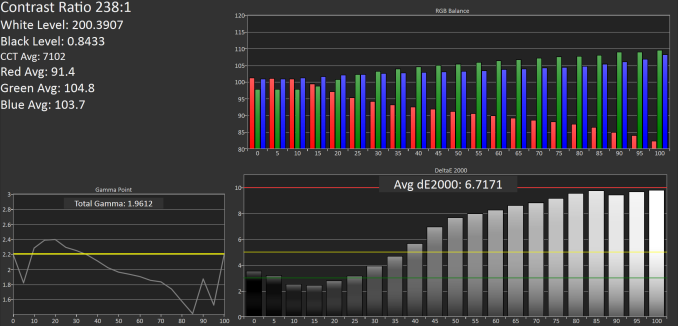
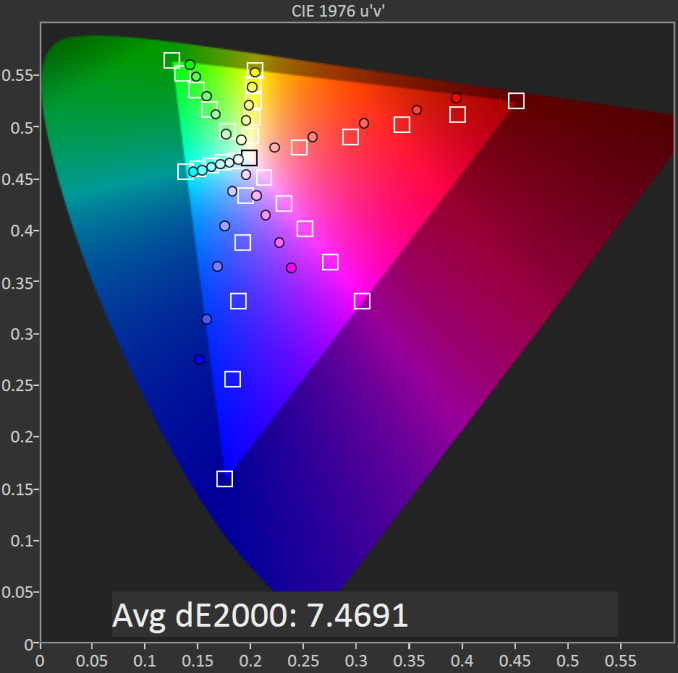
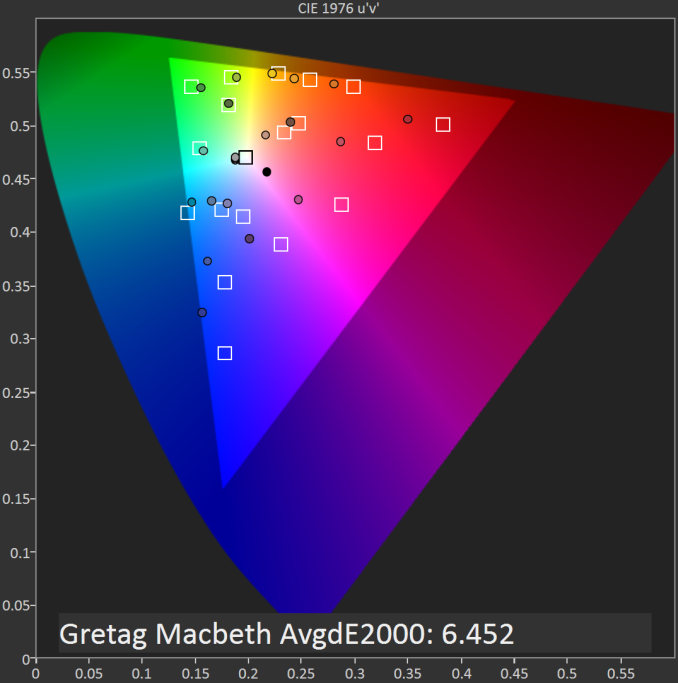
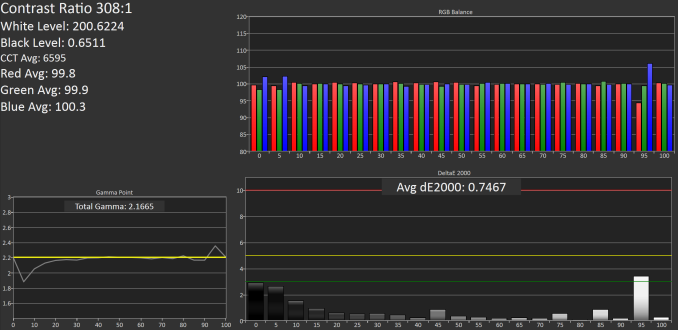
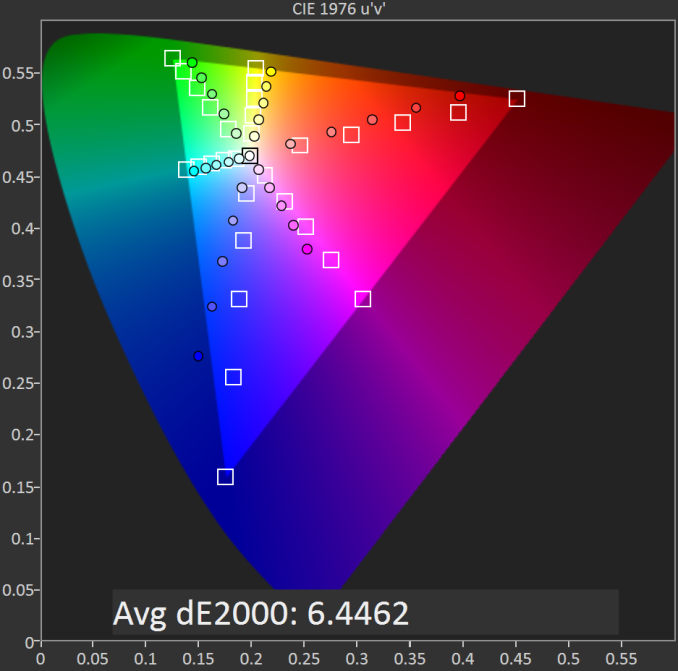
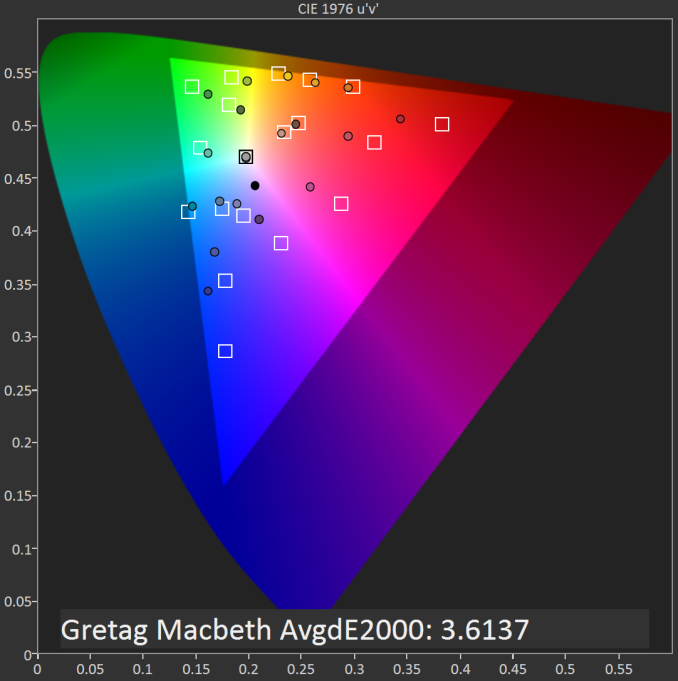








157 Comments
View All Comments
SanX - Friday, December 19, 2014 - link
Any tablet or phone with less then 1920x1080 must go straight to the drain or dollar storeBMNify - Friday, December 19, 2014 - link
Thanks for the review, inexpensive but decent windows 8.1 tablets are generally ignored by PR driven tech media. Will like to see the reviews of other Baytrail tablets like Dell Venue 8 pro, Acer iconia W4, Asus Vivotab Note 8 and Lenovo Mixx 2 8.sonicmerlin - Friday, December 19, 2014 - link
The biggest problem with Windows is that the Metro UI is boring and even ugly. It's claustrophobic and gets old real quickly.PC Perv - Friday, December 19, 2014 - link
Pathetic tablet and pathetic review to "excuse" its shortcomings. Amazon Kindles are way better deals.garbagedisposal - Friday, December 19, 2014 - link
Said no one ever. Time to climb back into the dumpster you little troll.PC Perv - Saturday, December 20, 2014 - link
Rofl. HP Stream 7 is just the right tablet for your, for just $119. Enjoy.I'd rather donate that money to UNICEF.
digiguy - Friday, December 19, 2014 - link
For those looking for a 8 inch Windows tablet with 4GB of RAM, it exists. And it also has 128 GB of (emmc) storage, the most powerful atom CPU (z3795, not very far from some i3 but fanless), micro HDMI, USB 3.0, full HD and LTE. It is the updated version of Thinkpad 8. Here in Europe it costs a little less than the Surface pro 3 with i3.... I would have bought one if weren't for lack of a stylus (essential for me in such a small, but premium, tablet...)Spectrophobic - Friday, December 19, 2014 - link
I got my Stream 7 for $64.10 from the MS Store; bought it due to being morbidly curious about how Windows run with only 1GB memory. Turns out, not bad. Well, while it's still predominately memory-bottlenecked, things can go smoothly when used the right way. In terms of web browsing, you pretty much have to stick to desktop/Metro IE. Chrome is fine when you only work with a single tab. YouTube videos are only good up to 720p on most videos and the same applies to x264 videos.The only real gripe with the thing is audio; the speaker sucks and the 3.5mm jack has static. I refuse to hear any audio coming out of this thing, unless if you put a USB DAC/amp with it. My unit unfortunately contains dead pixels. Minor, but my OCD refuse to forget about it. Kinda considering returning it...
In the end of the day, it's a good tablet for the money that is actually back by a known company. It's good, not very good, just barely good. But, I still consider it as a "toy" due to its limitations. Hopefully, a company would come up with a Windows 10 (with Bing?) with a decent SoC with 3GB RAM, 10" 1920x1200, and a stylus (that can fit into the thing) for $300.
sonicmerlin - Friday, December 19, 2014 - link
Except the Zoom in function to increase font size doesn't even work in IE (or Chrome). It just zooms in the entire page, making it impossible to zoom out. It's extremely annoying having to read small font on a low res screen.Spectrophobic - Friday, December 19, 2014 - link
Uhhh, I don't have any problems with zooming in or out in Chrome, Desktop IE, or Metro IE. By "Zoom in function to increase font size" do you mean: 1) Pinch zooming, 2) Web browser scaling, or 3) Windows scaling?Also I'm on 125% windows scaling.